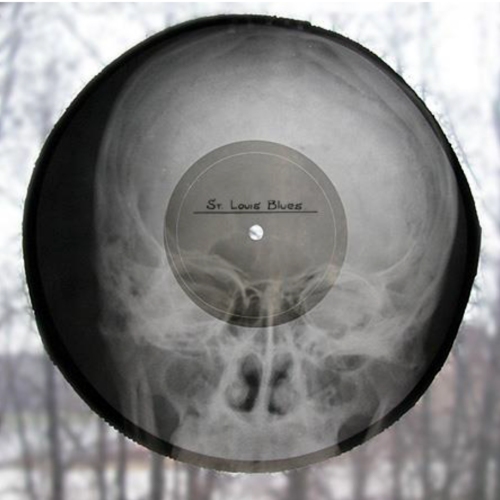In 1946 Stanislav Filon, a young Soviet engineer, brought a record-cutting machine home from the front as a war trophy and used it to start a business in Leningrad.
By day, Filon recorded the voices of customers on industrial plastic discs; by night, he and his friends made pirate copies of records of foreign jazz and popular music.
Since the plastic discs were expensive and scarce, they experimented with alternatives, finally settling on abundantly available and virtually free used medical X-rays. These pirate copies were widely known as музыка на костях (muzyka na kostâh, music on bones).
This according to “Acoustic palimpsests and the politics of listening” by J.Martin Daughtry (Music and politics VII/1 [winter 2013] 35 p.). Above, St. Louis blues on a skull; below, a different kind of music on bones.



